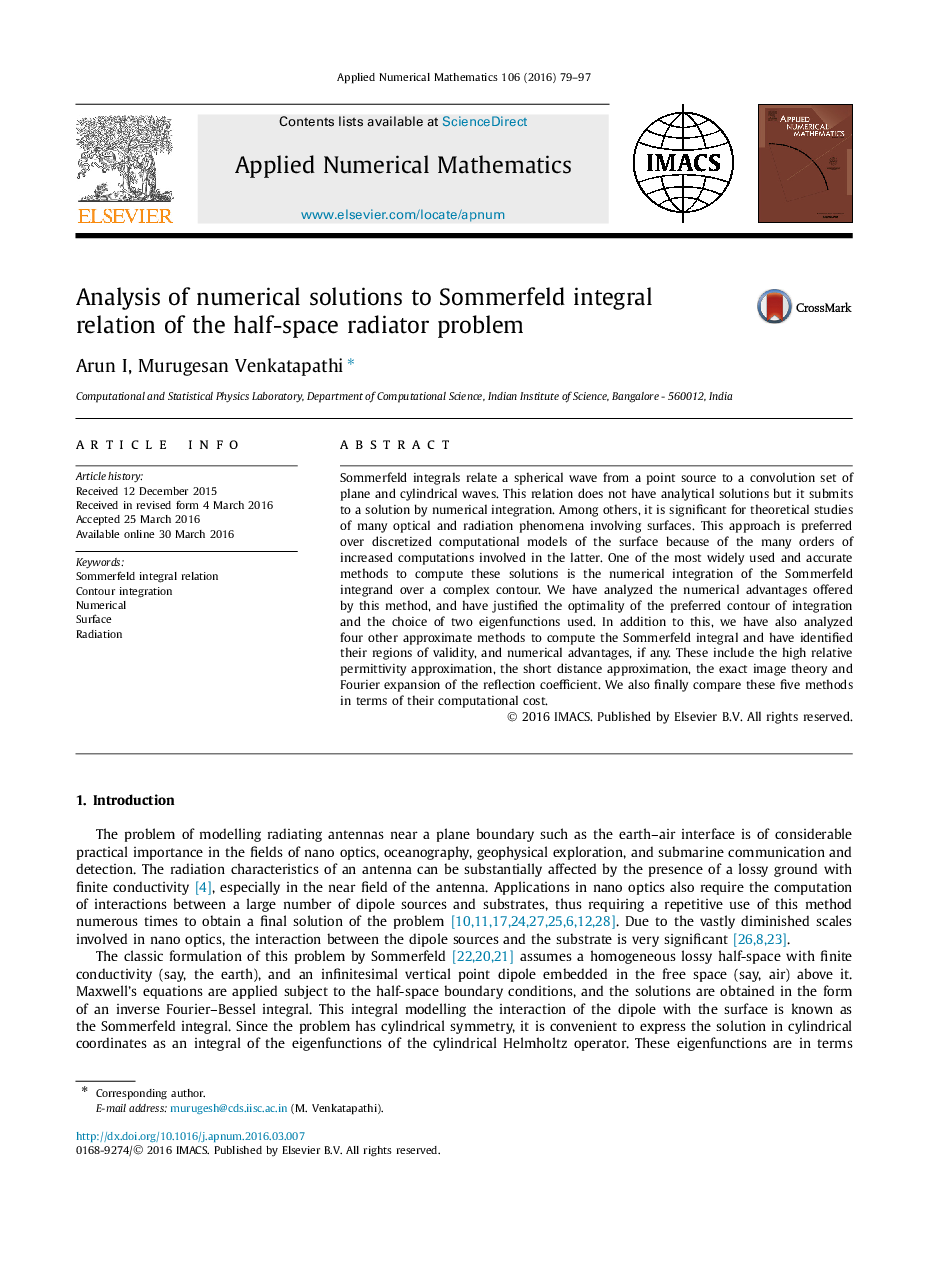| Article ID | Journal | Published Year | Pages | File Type |
|---|---|---|---|---|
| 6423180 | Applied Numerical Mathematics | 2016 | 19 Pages |
Sommerfeld integrals relate a spherical wave from a point source to a convolution set of plane and cylindrical waves. This relation does not have analytical solutions but it submits to a solution by numerical integration. Among others, it is significant for theoretical studies of many optical and radiation phenomena involving surfaces. This approach is preferred over discretized computational models of the surface because of the many orders of increased computations involved in the latter. One of the most widely used and accurate methods to compute these solutions is the numerical integration of the Sommerfeld integrand over a complex contour. We have analyzed the numerical advantages offered by this method, and have justified the optimality of the preferred contour of integration and the choice of two eigenfunctions used. In addition to this, we have also analyzed four other approximate methods to compute the Sommerfeld integral and have identified their regions of validity, and numerical advantages, if any. These include the high relative permittivity approximation, the short distance approximation, the exact image theory and Fourier expansion of the reflection coefficient. We also finally compare these five methods in terms of their computational cost.
